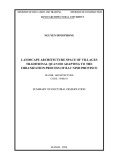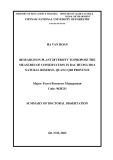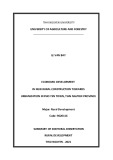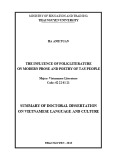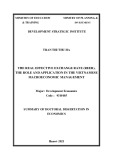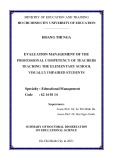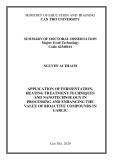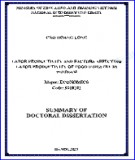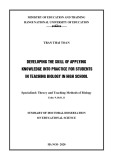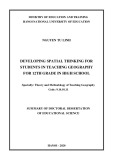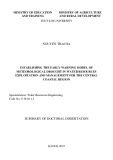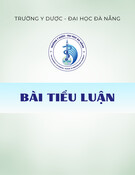
3
2.1.1. Standard selection
- Patients with a history of trauma, traumatic events with paralysis or
paralysis and clinical examination and determination of lesions and
symptoms of MRI Tesla 3.
- Being treated for traumatic brachial plexus injury at the Military
Orthopedic Trauma Institute, 108 Military Central Hospital and a surgery
document describing the lesions of traumatic brachial plexus injury
according to the medical records of this study.
2.1.2. Exclusion criteria
Patients who is suffering from traumatic brain injury, but not
due to traumatic injury, but due to medical disease, multiple injuries.
Patients who do not agree to participate in this study. Patients who are not
recorded in the medical records.
2.1.3. Sample size
Instead of the formula we have n = 48 patients.
2.2. Research Methods
A prospective, cross-sectional descriptive study comparing the
diagnosis of brachial plexus injuries on MRI 3 Tesla befor surgery with
postoperative diagnosis.
2.2.2. Research content
2.2.2.1. General characteristics of brachial plexus injuries: Age,
gender, causes of injury, combined injury, place of injury, time from
illness to imaging, duration from illness to surgery.
2.2.2.2. Image of brachial plexus injuries on MRI
In combination with the diagnostic criteria of some authors, we
propose to investigate 10 signs of brachial plexus injuries on MRI 3 Tesla
as follows: spinal cord stenosis, oedema from preganglionic, root
avulsion, pseudomeningocele, diarrhea (root, trunk, cords), swelling
(root, trunk, cords), Rupture in the sheath (root, trunk, cords),
Incomplete rupture, rupture (root, trunk, cords), atrophy
- The above-mentioned brachial plexus injuries are described
in the following positions: divided by anatomy and T1W vertical, T2W
longitudinal, T2W horizontal, T2-weighted, T2-weighted, T2-weighted,
myelography ), MIP and 3D
- Location of marrow and root, trunk, cords on all MRI
2
2
)2/1(
)p1(p
Zn






